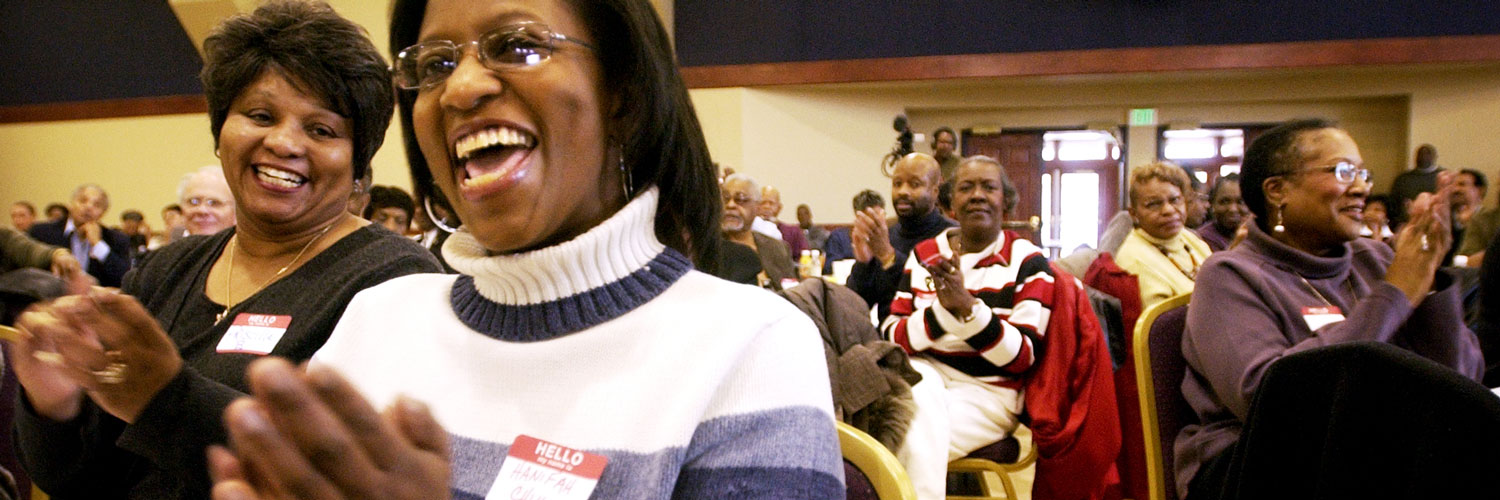
<p>Priscilla Brown, the Executive Director of the Black United Fund of Colorado, and Denver resident Hanifah Chiku, attend the First Annual African American Summit at New Hope Baptist Church in Denver, CO on January 31, 2004. Photo By Craig F. Walker/The Denver Post via Getty Images.</p>
The well-documented and persistent racial wealth gap is itself great cause for concern. But it also leads to concern about the implications for broad participation in charitable giving—that is, whether people across income categories, professions, racial or ethnic identities, and age groups can meaningfully contribute their income and wealth to support social causes.
Taking a look at the latest available data on wealth and charitable giving, it is clear that black families, though hindered by a history of structural barriers and practices that have blocked asset building and wealth creation, are choosing to prioritize philanthropy. Of all racial or ethnic groups in the dataset, black families have contributed the largest proportion of their wealth—which can include savings, used cars, land, and investment accounts—to charity since 2010.

Why do black families give?
Although charitable giving is a highly personal decision, some sociocultural and historical factors shape philanthropic preferences among black donors—both individually and collectively—and may shed light on why we observe these differences in charitable giving through wealth.
From a sociocultural standpoint, high-net-worth black families are reportedly more likely to have family traditions around giving than their white counterparts. They also report more fulfillment from their charitable giving. These factors likely contribute to a lasting social commitment to give, even as income and wealth fluctuate.
From a historical and institutional perspective, black communities have robust networks and organizations that support and facilitate charitable giving and help maintain high levels of charitable participation.
Black communities have some of the oldest and most deeply entrenched identity-based funds (e.g., Black United Funds, foundations affiliated with civic and fraternal organizations, and giving circles) that are created, led, and supported by community members.
These institutions allow for collective giving, simplify the giving process, and serve as brokers between donors and recipient organizations. This collective support around giving may create certain norms and standards for how families give.
The influence of “cultures of giving”
As we note this trend of higher levels of giving in proportion to wealth, we are not suggesting that black families are more generous than families of other racial or ethnic groups. There are many more determinants of generosity than presented here.
Also, the pattern we observe may simply be the result of restricted discretionary income, which may lead some families to choose to tap their wealth for giving, while families with more discretionary income might not need to use their savings and assets for charitable giving.
What we can say from these data is that, even with less wealth, the cultures of giving in the black community help maintain, and even expand, the philanthropic impulse in black families.
Let’s build a future where everyone, everywhere has the opportunity and power to thrive
Urban is more determined than ever to partner with changemakers to unlock opportunities that give people across the country a fair shot at reaching their fullest potential. Invest in Urban to power this type of work.